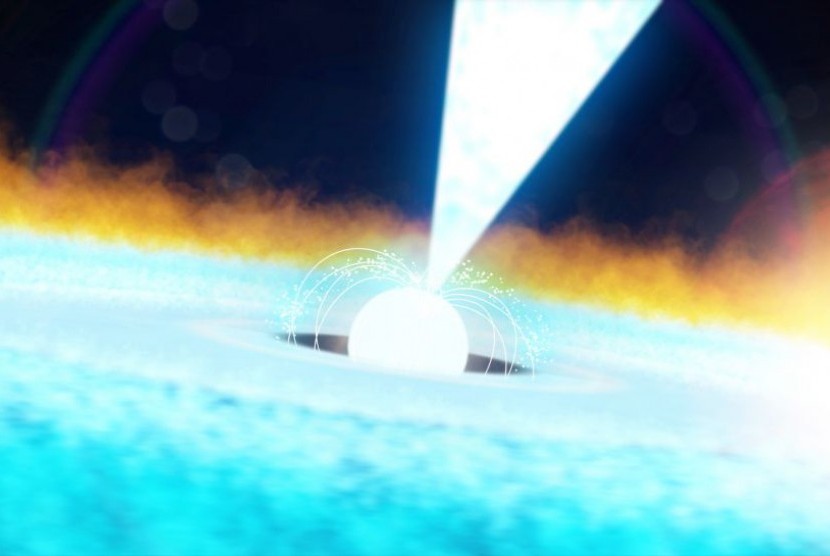The neutron star rotates every 76 seconds.
REPUBLIKA.CO.ID, JAKARTA — A team of scientists found neutron star which moves in a strange way. A neutron star is a stellar core that collapses from a giant star. The neutron star was named PSR J0941-4046.
Reported from EarthSkytim LakeTRAP discovered the neutron star while using the MeerKAT radio telescope in South Africa to observe the Vela X-1 region of the Milky Way, which is about 1,300 light-years from Earth. While in the process of observing, scientists witnessed flashes or “pulses” that seemed odd lasting about 300 milliseconds.
The star initially appeared from a single flash. However, the team then looked at historical data for the area to look for comparable flash pulses. As it turned out, more similar pulses were found that were previously ignored by technology.
A brief examination of the pulse arrival time revealed that it repeated every 76 seconds. That is, the star completes one rotation every 76 seconds.
To date the longest known rotation time for a pulsar is 23.5 seconds, which implies that scientists may have discovered an entirely new type of radio-emitting object. Findings published in the journal Nature Astronomy on May 30, 2022.
Anomalies among neutron stars?
PSR J0941-4046 is a strange radio-emitting galactic neutron star that spins very slowly compared to other pulsars. Despite the unusual pulse, PSR J0941-4046 is particularly remarkable because it lies in the “graveyard” of a neutron star.
This location is a region of space where it is not anticipated to find radio emission, because the neutron stars here are thought to be near the end of their life cycles and thus are inactive (or less active).
PSR J0941-4046 raises questions about how neutron stars form and evolve. This is especially interesting because this star appears to be emitting at least seven different pulse shapes.
Most neutron stars do not show such diversity. This variation in the shape of the pulsations, as well as the intensity of the pulsations, is most likely due to an unknown physical emission mechanism of the object.
–
–


